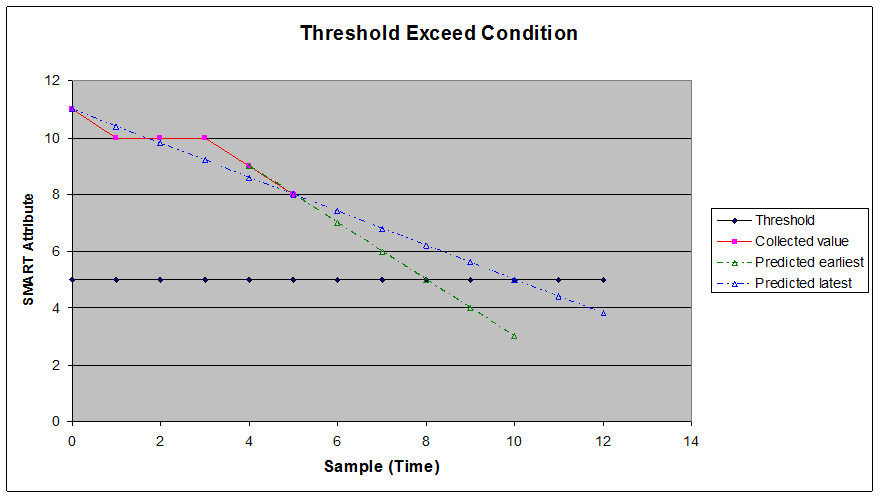Before attempting to predict a particular device's TEC, please read the Specific Disclaimer on SMART Failure Predictions section of the EULA
The SMART component of SysInfo DLL records the SMART attributes of available SMART devices every time the following functions are called:
Every time a set of values is recorded, it is appended to a binary file (<serial number>.bin). The following information is recorded:
By recording a history of SMART values, SysInfo DLL can predict when the threshold SMART value will be exceeded (Threshold Exceed Condition) for a particular device.
Alternatively, you can export these values using the SysInfoDll_Smart_GetTECDataSetCount() and SysInfoDll_Smart_ExportTECData() function calls to, for example, an Excel Spreadsheet and derive your own graphs and charts that will enable you to see the pattern of the SMART attributes.
In the graph below, there are 6 sets of collected data, sample 0 to sample 5, represented by the red line. The threshold value (which remains constant) is represented by the black line. The blue line represents the predicted threshold exceed condition date based on the 1st and last sample while the green line ( ) represents the predicted threshold exceed condition date based on the last 2 samples. Based on the data above, the earliest predicted failure date will occur at sample 8 and the latest predicted failure date will occur at sample 10.

Graph illustrating TEC prediction
To successfully predict a TEC date and time for an attribute, all the following conditions need to be met:
If any of the above condition is not met, a negative error code will be returned and the time value will be set as zero (0).